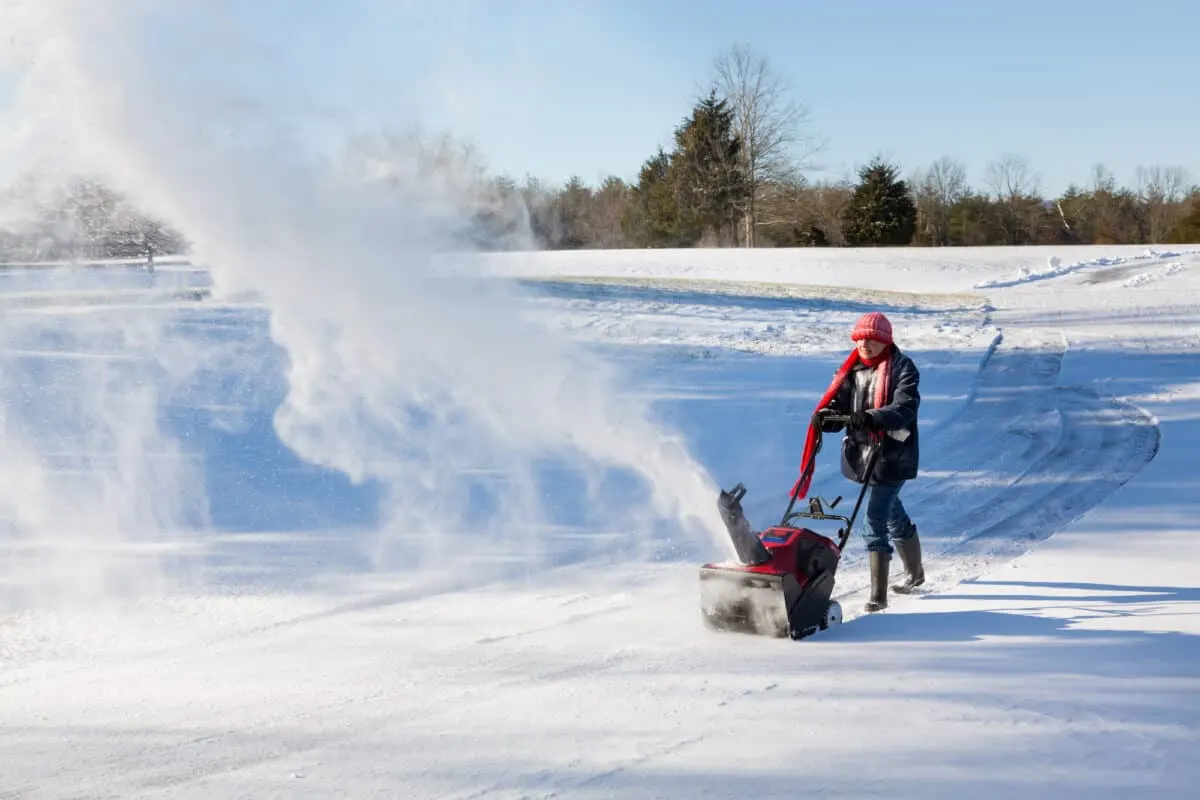While flat tires maybe a nuisance when out with your snow blower they can be fixed relatively easily. These are the best ways for how to fix a flat tire on a snowblower.
First, start by locating where the hole is. Then fix it using either a tire sealant (my favorite for snowblowers and lawn blowers is listed below) or by using a tire plugging repair kit.
In this post, I will be sharing tips based on my personal experience of how to easily identify the hole and how to decide whether to plug or seal.

Related Post: Minimum Depth of Snow for Using a Snowblower
Identify Where the Hole Is
You want to begin by identifying where the leak is coming from. I have found that the easiest way to locate a hole on a tire (or any inflated object) is by covering the area with soap and water. Then as the air leaks from the tire, it will form bubbles in the soap.
If you have a tubeless tire, you may realize that it is not a hole, but rather a leak coming from the bead between the tire and the rim. In this case, I suggest following the ratchet method.
Related Posts:
- One-stage vs. Two-stage vs. Three-stage Snowblowers
- Difference Between a Snowblower and a Snow Thrower
- Best Brands of Snowblowers to Use
- Are Snowblowers Worth the Money?
Repair The Leak
If you have found a small hole in your snowblower tire, then you can repair it with a tire plug or a tire sealant. Repairing your snowblower tire using any of the two following methods will require you to remove the tire from the machine.
I found that removing and reattaching the tire to the machine actually took longer than repairing the hole in the majority of cases. With most snowblowers, you only need a flathead screwdriver to remove the tire (just be sure to hold the axle in place as this sometimes tries to come off or move out of place as you remove the tire).
Tire Plug
Most tire repair kits are universal. I suggest having one on hand before you need it. They are affordable, small enough to store easily, and suitable for a range of different tires.
I have used this repair kit on my snowblower, ATV, and my bike.
Once you have removed the tire from the snowblower, simply follow the instructions either in the manual or in the tire plug repair kit.
Tire Sealant
If you are looking for a slightly more hassle-free alternative, you could look to apply a tire sealant instead.
I used to use Multi Seal, but it seems that this brand has actually been replaced by FlatOut who have a specially designed tire sealant for small outdoor appliances including lawnmowers and snowblowers.
On the back of the packaging, you will find full instructions on how to use this sealant and how much to apply to the tire (it varies depending on the size of the tire you are repairing).
The fluid is designed to enter the tire through the valve which makes it a simple and mess-free solution. Once you have added the correct amount, you can replace the cap with a stem, inflate the tire and then change out the stem for the cap.
Test The Tire
Once you have performed any repair to the tire, you will want to inflate it to the minimum pressure as set in the snowblower manual. Then, check to ensure the leak is no longer present.
After a couple of minutes, reapply the pressure inflater to check the pressure again and ensure it is being maintained. Once you are confident the leak is no longer present, you can go ahead and inflate the tire to the standard pressure required.
I suggest this tire pressure pump from Viair to inflate tires at home.
Be sure to keep these snowblower maintenance tips in mind when using your snow removal machine this winter:
- How to Clean a Snowblower Carburetor
- Where to Dispose of Snowblower Oil
- How to Prevent a Snowblower from Clogging
- Universal Keys to Use with Snowblowers

